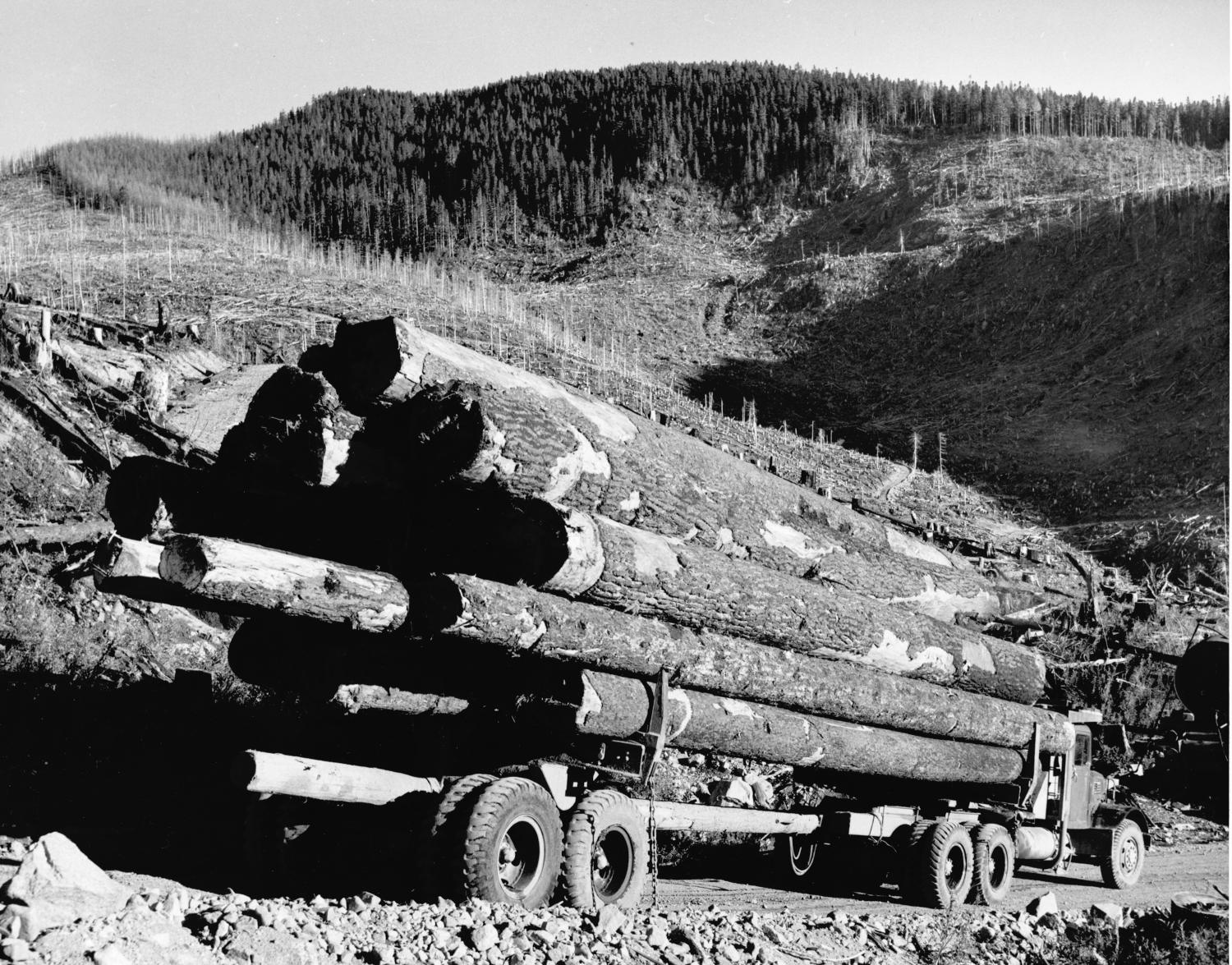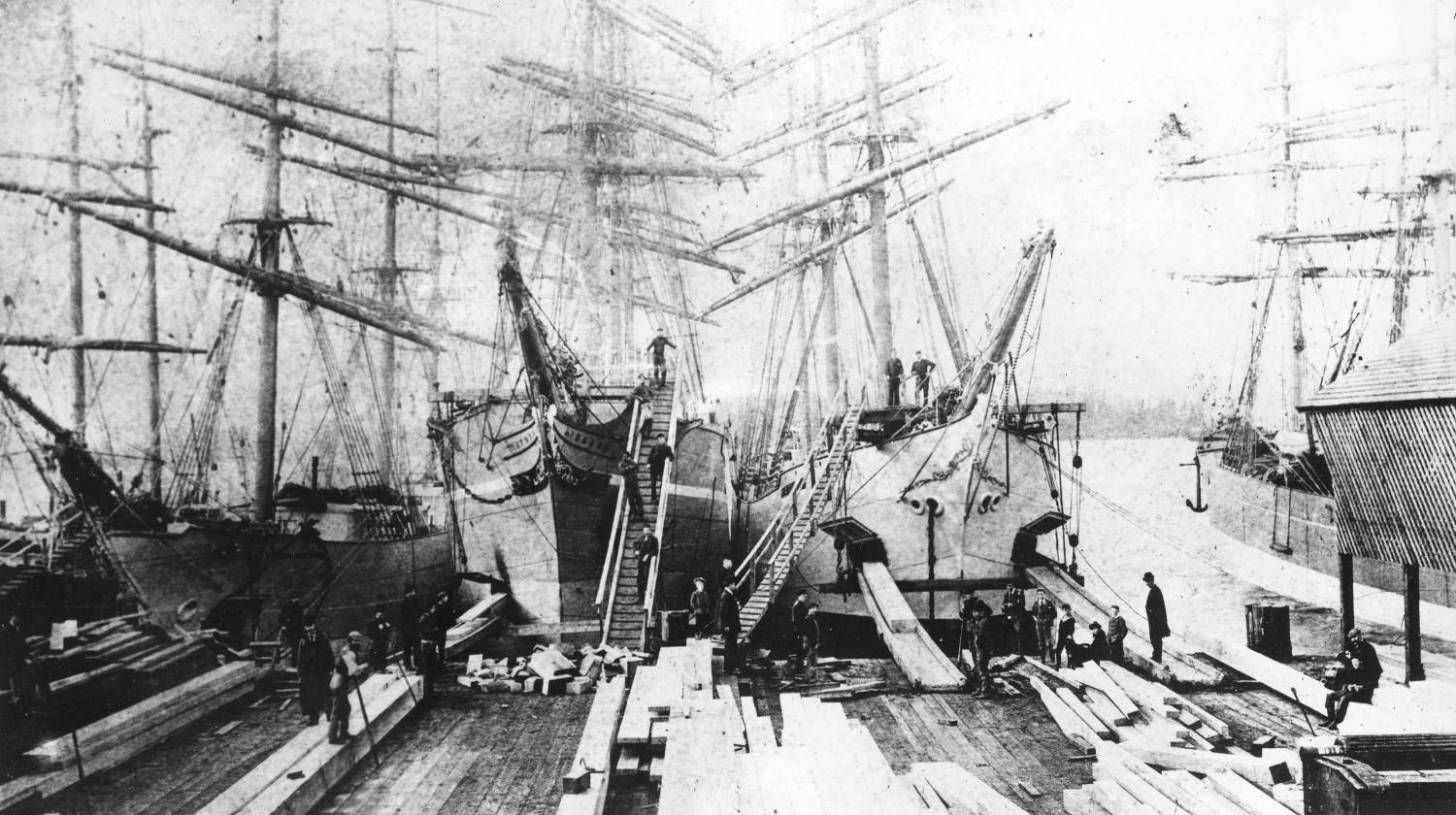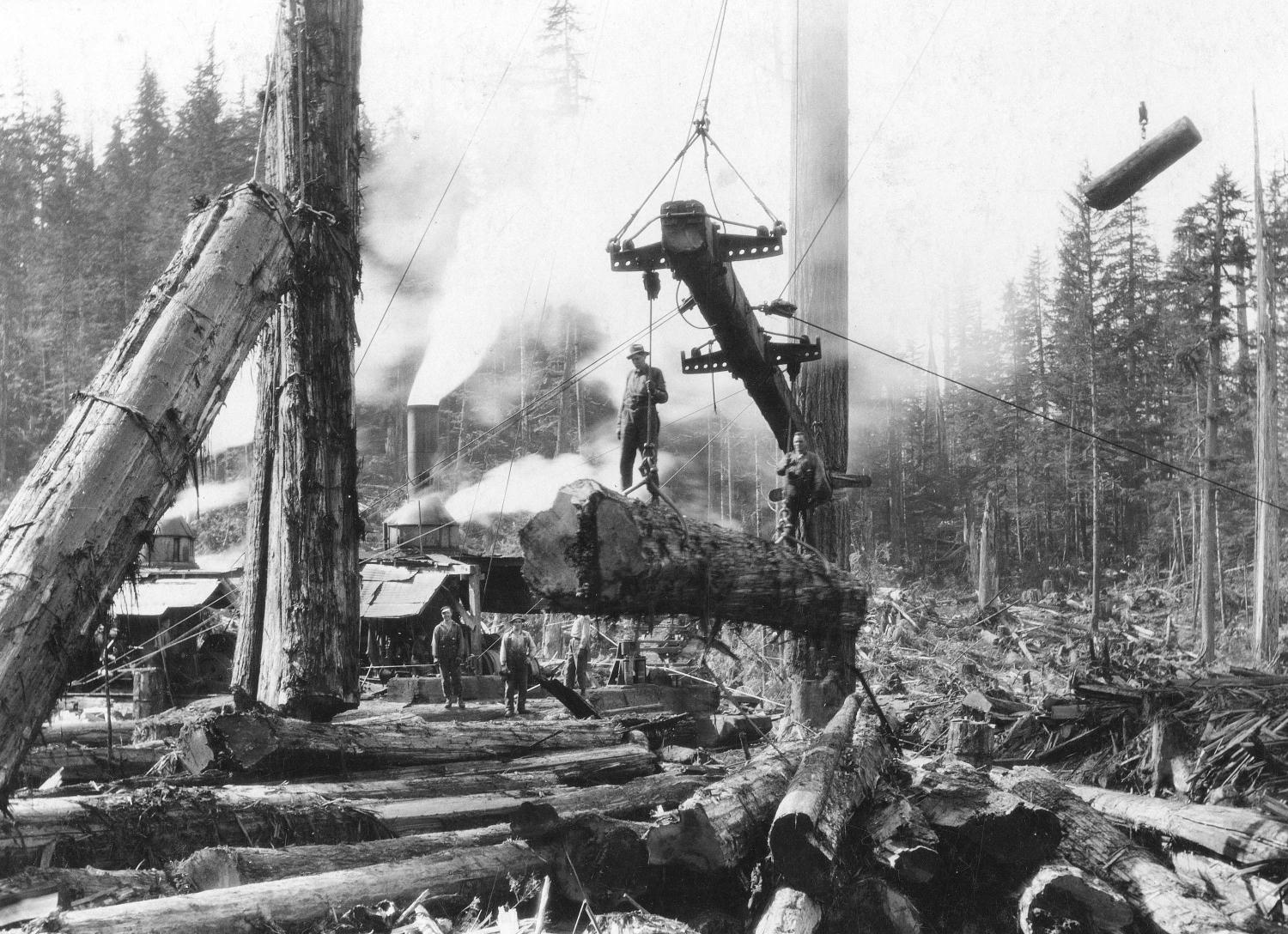B.C.’s Forest Economy
Logging companies grow large as the province struggles with how to sustainably manage a profitable resource
Date: 1940
Of the 95 million hectares that make up British Columbia, nearly two-thirds — 60 million hectares — is forest. Trees blanket the land in a verdant canopy: the lodgepole pines that sprawl across central B.C., the northern woods made up of aspen and pine, and the milder coastal rainforests — some of the last of their kind remaining in the world — that are home to long-living giants like the Sitka spruce and western red cedar. For thousands of years, Indigenous communities have depended on these trees, using them to build homes, make medicine, fashion clothing, among other purposes.
When the first Europeans came to the northwest coast in the 1700s, they saw something else in the lush forests that greeted them: the green of capital, not foliage. By the 19th century, the towering Douglas firs that line the coast were being cut down and sent south to San Francisco to be made into ships. When British Columbia entered Confederation in 1871, large mills had already been established along Burrard Inlet, their lumber sent eastward to build the new transcontinental railway. Only a few years later, that timber would make a much shorter trip as developers established and set upon building the new city of Vancouver.
In the decades that followed, B.C. would become synonymous with logging. Loggers had depleted forests out east, and builders were hungry for more raw material. From elaborate pulley systems that suspended large logs to a truck designed specifically to move timber, technological advances had also made the process of felling many trees and transporting them much easier. By the 1920s, B.C. was Canada’s largest source of lumber, and trees from the province were sent across continents and oceans. In 1923, B.C.’s forestry industry employed 40,000 — roughly 10 per cent of the province’s population at the time. When the Great Depression hit in the 1930s, the forestry sector took a hit, as nearly all industries did. But it reclaimed any lost vigour by the 1940s with the beginning of a multi-decade housing boom.
And those who reaped the rewards were not the small lumber companies of B.C.’s past but giant corporations, often based from abroad and dead set against any unionization among workers. This was a reality shaped by decades of provincial forestry policy. In 1865, British Columbia had engineered a timber tenure system where 95 per cent of forested land would remain under Crown control, and aspiring logging companies would have to pay for a license to harvest trees. But a license came burdened with responsibilities including reforestation, building and maintaining infrastructure and other payments, all a hefty price tag that only the biggest players could afford. As a result, corporations consolidated to yield industrial giants like MacMillan Bloedel. For years the government was content with a hands-off approach — to the delight of logging corporations — imagining that private interests would adequately manage the forests.
By 1975, the ten largest logging companies controlled 60 per cent of the province’s available forests, much of it logged to make pulp and paper. The industry remained a pillar of the B.C. economy, supporting nearly a third of the province’s workforce. The forests themselves, though, were not faring as well. Private management encouraged by B.C. policy had replaced old-growth forests — some containing trees more than a thousand years old — with what they viewed as productive new tree farms.
But the good times wouldn’t last. In the middle of the 1970s, a recession rocked what had previously been a steady industry. Prices of pulp dropped as the American lumber market collapsed. Logging camps shut down. But loggers weren’t only facing economic straits: environmentalists and Indigenous activists had grown increasingly vocal about the devastation wreaked in old-growth forests. By the 1980s and 1990s, this backlash would culminate in dramatic showdowns on Meares Island, Haida Gwaii, and other pockets of ancient forest throughout B.C.
By the end of the 20th century, the state of the province’s forest economy had become increasingly precarious. Once the centre of British Columbia’s industry, forestry only employed five percent of the province by the 1990s. It contributed half of what it did to the provincial gross domestic product 30 years before. An increase in parks and protected territory had cut into the amount of land available for logging; meanwhile, despite attempts to refine the timber tenure system, politicians in Victoria were at a loss at how to satisfy both activists and corporations. This impasse continues to this day, with environmental blockaders and government currently at loggerheads over Fairy Creek on Vancouver Island.
Sources:
- British Columbia Ministry of Forests. British Columbia’s Forests and Their Management. Government of British Columbia, Sept. 2003, https://www.for.gov.bc.ca/hfd/pubs/Docs/Mr/Mr113/BC_Forest_Management.pdf.
- British Columbia Ministry of Forests and Range. Timber Tenures in British Columbia: Managing Public Forests in the Public Interest. Government of British Columbia, June 2012, https://www2.gov.bc.ca/assets/gov/farming-natural-resources-and-industry/forestry/timber-tenures/timber_tenures_brochure_2012.pdf.
- Coward, Garth. Tree Book: Learning to Recognize Trees of British Columbia. Canadian Forest Service, 1994.
- Geography Open Textbook Collective. "Forest Tree Tenures." British Columbia in a Global Context, 2014, https://opentextbc.ca/geography/chapter/7-5-forest-tree-tenures/.
- Hainsworth, Jeremy. "B.C. 2019 Workplace Deaths Match Record High." Vancouver Is Awesome, 22 Oct. 2020, https://www.vancouverisawesome.com/bc-news/bc-2019-workplace-deaths-match-record-high-2812148.
- Hak, Gordon. Capital and Labour in the British Columbia Forest Industry, 1934-74. UBC Press, 2011.
- Rajala, Rick. "The Evolution of West Coast Logging." Legion Magazine, Nov. 1997, pp. 36–38, https://legionmagazine.com/en/1997/11/the-evolution-of-west-coast-logging/.
- Safton, Bryce. Growing Louder: The Environmental Movement in Clayoquot Sound, 1980-93. University of Victoria, 4 Apr. 2017, https://www.uvic.ca/humanities/history/assets/docs/Honours%20Thesis%20-%20Bryce%20Safton%2020172.pdf.
- Wilson, Jeremy. Talk and Log. UBC Press, 1998.






